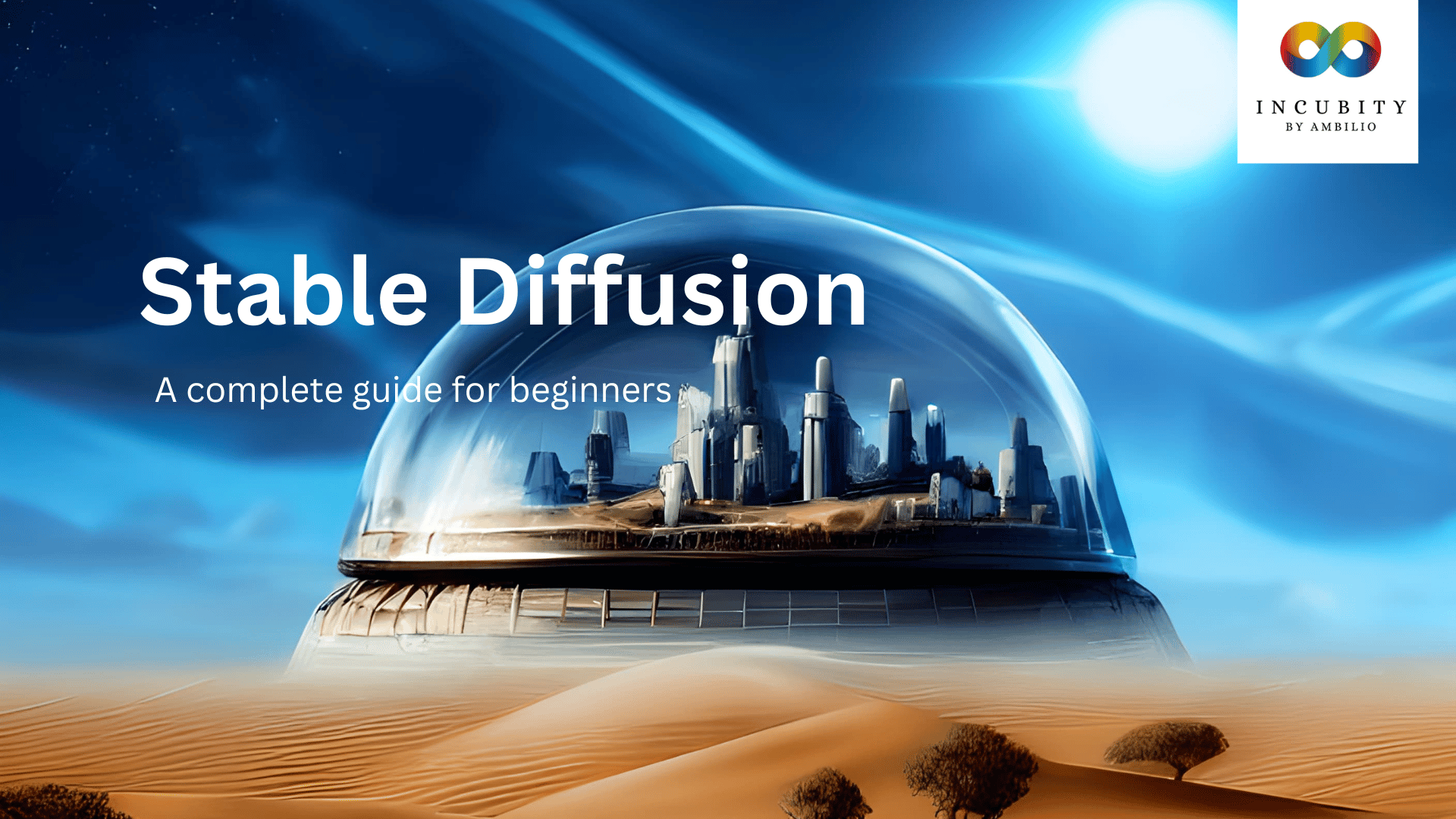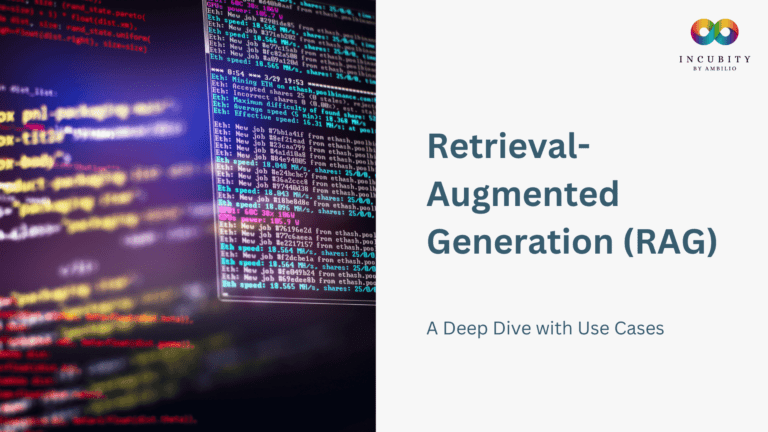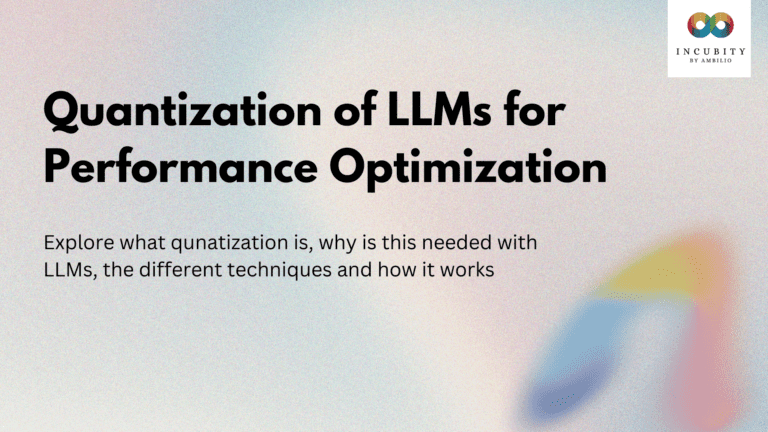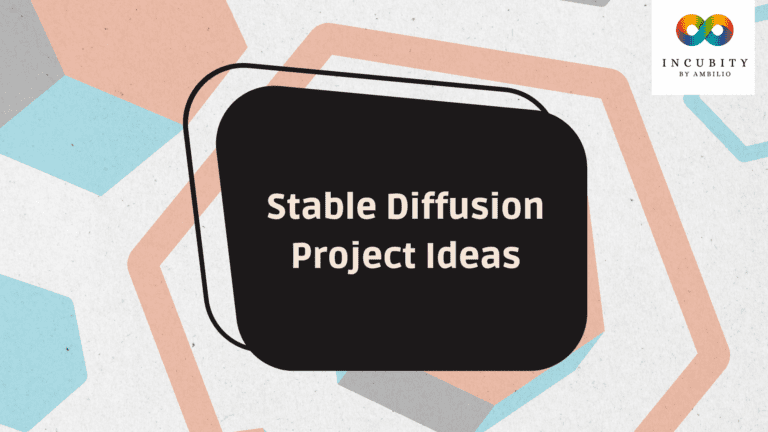Stable diffusion is a powerful generative AI technique that involves sampling from a diffusion process, which can be used to model complex distributions and generate realistic and diverse samples. It has a wide range of applications in various industries, such as image and text generation, drug discovery, and finance. By modelling the evolution of a system over time, stable diffusion allows for the exploration of high-dimensional spaces and the generation of novel data that follow the same statistical properties as the original data. Overall, stable diffusion is a versatile and effective technique for generating realistic and diverse data in various domains. We present here a complete guide to stable diffusion for beginners and will try to make its concept very clear through this article.
What is the Stable Diffusion Model?
Stable diffusion is a generative AI model that uses a stochastic process called a diffusion process to model complex distributions and generate realistic samples. Diffusion processes are a type of stochastic process that describes the evolution of a system over time-based on random fluctuations.
In the stable diffusion model, a set of high-dimensional features or variables is sampled from a Gaussian distribution, which is then evolved over time using a diffusion process. The diffusion process involves a series of discrete steps, each of which modifies the feature vector based on the noise added at that step.
The diffusion process is controlled by a set of hyperparameters, such as the number of steps, the size of the noise added at each step, and the scale of the initial Gaussian distribution. By tuning these hyperparameters, the stable diffusion model can be trained to generate realistic and diverse samples that follow the same statistical properties as the original data.
The stable diffusion model has several advantages over other generative AI models, such as generative adversarial networks (GANs) and variational autoencoders (VAEs). One of the main advantages is that stable diffusion does not suffer from the mode collapse problem that can occur with GANs, where the generator produces only a limited set of samples. Additionally, stable diffusion can model complex distributions that are difficult for VAEs to represent.
The Diffusion Process
The diffusion process is a stochastic process that describes the evolution of a system over time-based on random fluctuations. In the context of generative AI, it is used to model the distribution of high-dimensional features or variables and generate realistic samples.
The diffusion process works by taking a starting point or a set of high-dimensional features and adding noise to it at each time step. The noise is typically drawn from a Gaussian distribution with a mean zero and a pre-specified variance. The features are then updated based on the noise added at each step. The resulting trajectory of the diffusion process represents the evolution of the high-dimensional distribution over time.
Working of Stable Diffusion Model
The stable diffusion model is a generative AI model that uses the diffusion process to model complex distributions and generate realistic and diverse samples. The model works by sampling a set of high-dimensional features from a Gaussian distribution, which is then evolved over time using the diffusion process.
The diffusion process in the stable diffusion model involves a series of discrete steps, where at each step, a small amount of noise is added to the feature vector. The noise is typically drawn from a Gaussian distribution with mean zero and a pre-specified variance. The feature vector is then updated based on the noise added at each step. The resulting trajectory of the diffusion process represents the evolution of the high-dimensional distribution over time.
The stable diffusion model is controlled by a set of hyperparameters, such as the number of steps, the size of the noise added at each step, and the scale of the initial Gaussian distribution. These hyperparameters can be tuned during training to generate realistic and diverse samples that follow the same statistical properties as the original data.
To generate a sample from the stable diffusion model, the model first samples from the initial Gaussian distribution, and then applies the diffusion process for a specified number of steps. The resulting feature vector is then transformed using a decoder network to produce the final output, such as an image or text.
Overall, the stable diffusion model is a powerful and versatile generative AI technique that can model complex distributions and generate realistic and diverse samples.
Applications of Stable Diffusion
Stable Diffusion is a generative AI model that has shown promising results in various industry applications. Some of the most important industry applications of Stable Diffusion are:
- Image Generation and Synthesis: Stable Diffusion can be used to generate high-quality images from scratch, which can be used in various industries such as gaming, design, and advertising.
- Video Generation and Synthesis: Stable Diffusion can be used to generate realistic videos from a given set of input images or videos. This can be useful in the film industry, animation, and gaming.
- Data Augmentation: Stable Diffusion can be used to augment data sets, which can be used in various industries such as healthcare, finance, and marketing.
- Anomaly Detection: Stable Diffusion can be used to detect anomalies in various industries such as cybersecurity, fraud detection, and manufacturing.
- Natural Language Processing: Stable Diffusion can be used to generate human-like text, which can be useful in various industries such as customer service, chatbots, and content creation.
- Drug Discovery: Stable Diffusion can be used in the pharmaceutical industry to generate novel drug molecules, which can help speed up the drug discovery process.
- Climate Modeling: Stable Diffusion can be used in climate modeling to generate realistic simulations of climate patterns, which can help in predicting future climate trends.
Overall, Stable Diffusion has a wide range of applications in various industries, and its potential is still being explored.
Text-To-Image Synthesis
Stable Diffusion is a generative AI model that allows the generation of high-quality images from textual descriptions. This model utilizes a neural network to perform the task of image generation. It is based on the idea of simulating the diffusion process of a physical system, where particles move from high-energy regions to low-energy regions.
In the context of Stable Diffusion, the “energy” of a system is defined by a discriminator network that is trained to distinguish real images from generated ones. The generative model, on the other hand, tries to generate images that fool the discriminator into believing that they are real.
To generate an image from a text description using Stable Diffusion, the process typically involves the following steps:
- Encoding the Text: The textual description is first encoded into a vector representation using a pre-trained language model such as GPT-3.
- Generating Latent Vectors: A set of latent vectors is generated from the encoded text using a diffusion process. In this process, noise is gradually added to the initial latent vector, and the resultant vectors are smoothed out over several iterations. This results in a set of latent vectors that capture the underlying distribution of the input text.
- Sampling Images: Once the latent vectors have been generated, the generative model is used to sample images from them. This involves passing the latent vectors through a series of deconvolutional layers that progressively increase the spatial resolution of the image.
- Refining the Images: The sampled images are then refined using another diffusion process. In this process, the images are progressively smoothed out to remove noise and enhance details. This results in a final high-quality image that closely matches the input text description.
Overall, Stable Diffusion is a powerful tool for generating images from text. It is capable of generating images that are highly realistic and closely match the input text description. Its ability to simulate the diffusion process makes it a highly effective tool for generating complex images with a high degree of detail.
For the implementations of the Stable Diffusion model in text-to-image applications, you can refer to its code and pipeline available on Hugging Face. You can check it out here for codes and check here for generating text without any coding requirements.







